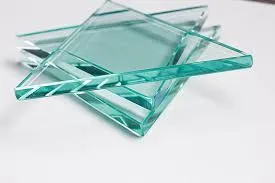Understanding the Difference Between Tempered Glass and Normal Glass
Glass is an essential material used in various applications, from windows and doors to shower enclosures and furniture. Among the different types of glass available, tempered glass and normal glass (also known as annealed glass) are two of the most commonly used. While they may appear similar at first glance, their properties, applications, and safety features differ significantly. In this article, we will explore the differences between tempered glass and normal glass, shedding light on their unique characteristics and advantages.
Production Process
The primary distinction between tempered glass and normal glass lies in their production processes. Normal glass is manufactured by melting silica sand, soda ash, and limestone, followed by a cooling process that leads to the glass’s formation. This process is relatively simple and results in a glass that has a uniform texture and thickness. However, normal glass can be quite fragile and is prone to breakage.
In contrast, tempered glass undergoes a special thermal treatment that enhances its strength. After the normal glass is formed, it is heated to a temperature of around 620–670 degrees Celsius and then rapidly cooled. This process, known as tempering, creates internal stresses in the glass, making it much more resistant to impact and thermal shock. As a result, tempered glass is approximately five to six times stronger than standard glass of the same thickness.
Strength and Safety Features
The added strength of tempered glass is one of its most significant advantages. This increased durability means that tempered glass can withstand higher impacts, making it ideal for use in situations where safety is paramount, such as in commercial buildings, vehicles, and public spaces. When broken, tempered glass shatters into small, blunt pieces that are less likely to cause injury, reducing the risk of sharp shards that normal glass produces.
Normal glass, on the other hand, breaks into sharp, jagged pieces when shattered, which can pose serious safety hazards. This property makes normal glass unsuitable for high-risk applications, such as glass shower doors or glass railings, where safety is a concern.
what's the difference between tempered glass and normal glass
Thermal Resistance
Tempered glass also offers superior thermal resistance. Due to the internal stresses created during the tempering process, this type of glass can withstand rapid temperature changes without breaking. This characteristic makes it suitable for use in environments with fluctuating temperatures, such as in oven doors or glass facades that face direct sunlight. Normal glass lacks this thermal resilience, making it vulnerable to cracking or breaking when subjected to sudden temperature changes.
Applications and Uses
Given their distinct properties, tempered glass and normal glass are used in different applications. Tempered glass is commonly found in safety glass installations, such as shower doors, glass doors and tables, facades, and car windows. Its strength and shatter-resistant properties make it the preferred choice for high-traffic and high-risk environments.
In contrast, normal glass is often used for applications where safety is less of a concern, such as in picture frames, non-structural windows, and decorative glass objects. While it remains popular due to its lower cost and ease of production, it is essential to consider its limitations.
Conclusion
In conclusion, the key differences between tempered glass and normal glass stem from their manufacturing processes and inherent properties. Tempered glass offers enhanced strength, safety, and thermal resistance, making it ideal for many applications where durability is critical. Normal glass, while more affordable, is less robust and poses greater safety risks when broken. By understanding these differences, consumers and designers can make informed decisions about which type of glass is best suited for their specific needs and applications.
 Afrikaans
Afrikaans  Albanian
Albanian  Amharic
Amharic  Arabic
Arabic  Armenian
Armenian  Azerbaijani
Azerbaijani  Basque
Basque  Belarusian
Belarusian  Bengali
Bengali  Bosnian
Bosnian  Bulgarian
Bulgarian  Catalan
Catalan  Cebuano
Cebuano  Corsican
Corsican  Croatian
Croatian  Czech
Czech  Danish
Danish  Dutch
Dutch  English
English  Esperanto
Esperanto  Estonian
Estonian  Finnish
Finnish  French
French  Frisian
Frisian  Galician
Galician  Georgian
Georgian  German
German  Greek
Greek  Gujarati
Gujarati  Haitian Creole
Haitian Creole  hausa
hausa  hawaiian
hawaiian  Hebrew
Hebrew  Hindi
Hindi  Miao
Miao  Hungarian
Hungarian  Icelandic
Icelandic  igbo
igbo  Indonesian
Indonesian  irish
irish  Italian
Italian  Japanese
Japanese  Javanese
Javanese  Kannada
Kannada  kazakh
kazakh  Khmer
Khmer  Rwandese
Rwandese  Korean
Korean  Kurdish
Kurdish  Kyrgyz
Kyrgyz  Lao
Lao  Latin
Latin  Latvian
Latvian  Lithuanian
Lithuanian  Luxembourgish
Luxembourgish  Macedonian
Macedonian  Malgashi
Malgashi  Malay
Malay  Malayalam
Malayalam  Maltese
Maltese  Maori
Maori  Marathi
Marathi  Mongolian
Mongolian  Myanmar
Myanmar  Nepali
Nepali  Norwegian
Norwegian  Norwegian
Norwegian  Occitan
Occitan  Pashto
Pashto  Persian
Persian  Polish
Polish  Portuguese
Portuguese  Punjabi
Punjabi  Romanian
Romanian  Russian
Russian  Samoan
Samoan  Scottish Gaelic
Scottish Gaelic  Serbian
Serbian  Sesotho
Sesotho  Shona
Shona  Sindhi
Sindhi  Sinhala
Sinhala  Slovak
Slovak  Slovenian
Slovenian  Somali
Somali  Spanish
Spanish  Sundanese
Sundanese  Swahili
Swahili  Swedish
Swedish  Tagalog
Tagalog  Tajik
Tajik  Tamil
Tamil  Tatar
Tatar  Telugu
Telugu  Thai
Thai  Turkish
Turkish  Turkmen
Turkmen  Ukrainian
Ukrainian  Urdu
Urdu  Uighur
Uighur  Uzbek
Uzbek  Vietnamese
Vietnamese  Welsh
Welsh  Bantu
Bantu  Yiddish
Yiddish  Yoruba
Yoruba  Zulu
Zulu 

